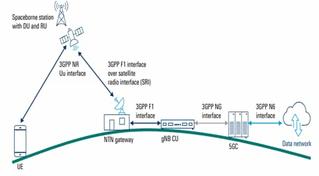Difference Between Small Cell Network vs NTN
Advertisement
Introduction : In today’s hyper connected world, mobile operators and network engineers constantly seek to deliver seamless, high capacity connectivity across diverse environments. Small cells help densify coverage in urban, indoor and high traffic zones. NTNs leverage satellites, high altitude platforms or unmanned aerial systems in order to extend reach to remote or underserved regions. Let us understand differences between small cell network and NTN.
Small Cell Networks
- It refers to a cellular network architecture using low powered radio access nodes (RANs) that cover small geographical areas usuaally about 10 meters to few hundred meters.
- They are used to densify the network (i.e. add more base stations) so as to increase capacity.
- They improve coverage, fill coverage gaps (i.e. dead zones) and improve signal quality.
- They use existing infrastructure so deployment costs are less.
Examples:
- Femtocells, picocells, microcells etc. depending on their range & power need.
Non Terrestrial Network (NTN)
- In the context of 3gpp and 5G NR, these are networks or parts of networks that use airborne or spaceborne platforms e.g. satellites (LEO, MEO, GEO) or high altitude platforms or unmanned aircraft systems.
- The infrastructure involves a payload (on the satellite or platform) that acts like a base station or relay, a feeder link between gateway on Earth and the satellite or aerial platform, and a service link between the user equipment (UE) and the platform.
- NTN is integrated into cellular standards (e.g. 5G NR and LTE etc.) via recent releases such as 3GPP Rel-17 onward.
- Typical challenges include propagation delays, Doppler shift, link budget constraints, atmospheric effects etc.
Examples: In 2025, Eutelsat, MediaTek, and Airbus completed a successful real world trial of 5G Advanced NR Non-Terrestrial Network using OneWeb’s LEO satellites. This trial implemented 3GPP Rel-17 specifications, showing how a satellite link can connect 5G user terminal to 5G core network (5CN).
Key differences
| Aspect | Small Cell Network | Non-Terrestrial Network (NTN) |
|---|---|---|
| Definition | Low powered terrestrial Base Stations deployed on ground, poles etc. | Base Stations or relay/payloads located in airborne or spaceborne platforms (e.g. stellites, HAPS, UAVs) with feeder service & gateway links to the Earth. |
| Coverage | Small coverage, tens of meters to few hundred meters | Much larger coverage per cell/beam, |
| Latency | Low | Higher |
| Mobility & handover complexity | Handover between neighbouring small cells and macto cells; Relatively static infrastructure, users move & cells are fixed. | More complex, movement of platform, handover involves satellite orbits, switching between platforms |
| Frequency Bands | Cellular licensed bands | Specific bands for satellite/airborne service such as L, S, FR1 bands |
| Cost | Lower cost per node | Higher initial cost for satellite or aerial platform. |
| Reliability | Susceptible to local infrastructure failures | More resilient in remote areas; can cover where terrestrial networks fail |
Conclusion: As 5G and future 6G systems evolve, the distinction between small cell networks and Non-Terrestrial Networks (NTNs) becomes not just a matter of capability, but a question of strategy. Small cells excel at high density, performance driven coverage in urban and indoor settings, while NTNs bring global reach and resilience where terrestrial infrastructure is impractical. Rather than competing, they are complementary technologies. By intelligently combining small cell deployments with NTN integration, network operators can build a more flexible, robust and future proof connectivity fabric for the next generation of wireless ecosystems.
Advertisement
 RF
RF
